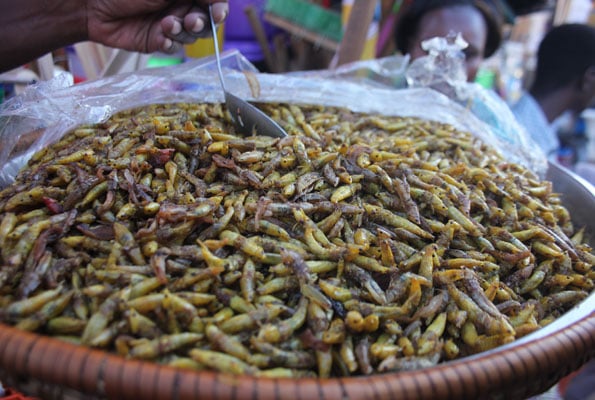Prime
Nsenene: High nutrition value on the wings

Grasshoppers are rich in fats and can be eaten as part of a main dish. PHOTO/ABUBAKER LUBOWA
What you need to know:
Savour on grasshoppers for fat, protein and carbohydrates.
Those who eat them will tell you that grasshoppers called nsenene,in Luganda is the crunchiest, most delicious and addictive dish of insects that they have ever eaten. The bush crickets which only make an occasional appearance on our menu are yearned for and their arrival so much anticipated that business people have invested heavily in catching and taking them to the market .
Meanwhile, nsenene lovers will pay a steep price just to get a meal of hoppers. November is nsenene season especially around Central Uganda where the long-horned grasshopper is a delicacy. One wonders, why all the fuss about nsenene?
It is believed that Africans have been eating grass hoppers since Biblical times. Apart from being so tasty, these edible insects are actually a high value source of nutrition on the wings, researchers have found. They contain exceptionally high amounts of proteins, fat, dietary fibre, and ash. Also grass hoppers provide a cheap and often free source of food as they are freely available in the wild for anyone willing and able to trap them.
Before being eaten, nsenene are plucked and washed before cooking them. Nsenene are almost never eaten raw.
The insects are a cheap food since you do not even need cooking oil to fry nsenene. The insects can fry in their own fat. Apart from being fried and flavoured with onions, nsenene could also be boiled or sun-dried and eaten on their own or served alongside other dishes.
At 41-43 per cent, the fat content in grass hoppers is high and is comparable to edible oil seeds such as pumpkin seeds at 41 per cent and ground nuts at about 49 per cent.The delicious insects have a higher fat content than soybean at 18.6 per cent and avocado at 12 per cent, which are some of the commonly consumed high fat plant foods in Uganda. The grasshopper meal is high in unsaturated fatty acids with omega 9 being the predominant monounsaturated fatty acid, which has been associated with lower cardiovascular disease risk.
Nsenene, whose scientific name is Ruspolia Nitidula contains dietary fiber, which is rare of any animal based foods. The amount of dietary fiber in Nsenene higher than that in plant sources like peas, bananas or avocado.
Dietary fibre supports regular bowel movement; helps maintain normal cholesterol levels and regular blood sugar levels as well as keeping the unwanted weight off. Lower cholesterol levels mean a lower risk for coronary heart diseases.
The carbohydrate content of grasshoppers, while lower than many plant food sources, is higher than that of meat and fish which have practically no carbs.
Quick recipe:
Collect grasshoppers- as many as you can catch
Pluck wings and limbs off
Soak in water for 15-20 minutes
Drain the water from pan
Salt and onions if you like seasoning
Fry until golden brown over medium heat
Stir occasionally to prevent burning
Add salt to taste



